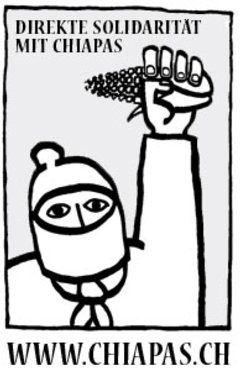From bean to cup
The coffee's journey

On the other hand, awareness of unfair terms of trade and inclination to pay better prices for fairer conditions of coffee production is second to no other product. Over the last years, various models of 'fair' trade relationships have been established, the most well-known being Fairtrade, Rainforest and UTZ. The relevance of direct imports from small-scale farmers and other alternative trade relations is steadily increasing. Unlike other fair trade models, Café Libertad Kollektiv stands for solidary trade. This implies cooperation with resistant indigenous cooperatives and support of social movements and political self-organisation.
Production
Coffee cultivation is quite labour-intensive. Coffee quality is determined by many factors, e.g. soil and weather conditions. About 70% of coffee production is generated by Arabica, Robusta accounts for 30%. The higher the coffee cultivation takes place, the slower the coffee plant is growing. This accounts for altitude being an essential quality feature, at the same time resulting in longer routes of transport and more exhausting work. Robusta can be cultivated in lower regions, while Arabica is grown primarily at higher altitude. Therefore, fluctuating world market prices cause severe problems, for small-scale farming in particular.
Processing
Coffee berries are red fruits. They normally contain two pits which, when in our coffee or espresso, are looking back on a long journey. They are peeled during wet processing, scoured from honey water and pergamin skin, sorted, stored and finally prepared for export in containers. Small-scale cooperatives are organising this collectively to minimise dependency on corporations and intermediaries. 20 to 25 million people in coffee producing countries depend on its production and export.
Trade
At times, coffee is procured and sold seven times before arriving at the consumer. Nevertheless, the price is quite low if compared to the amount of labour input for production and processing; the reason being very cheap producer prices. The more small-scale the production structures, the longer the marketing chain is typically going to be. Direct importers are attempting to minimise marketing costs in order to realise a higher share of the retail price for cooperatives and producers.
Distribution
The bulk of the coffee is distributed conventionally, this share amounts to about 70-75%. The bulk thereof goes to supermarkets and chain stores. However, for several years, the share of fair and solidary trade is increasing, as well as local roasting and direct imports. One crucial factor determining the quality and sustainability of roast coffee is its freshness when arriving at the consumer. Additionally, Café Libertad Kollektiv and other fair trade protagonists' prices include solidarity premiums for cooperatives, social or political projects.
Roasting
Roasting is the last step of coffee bean processing. Technically, coffee can well be roasted at home in the frying pan. The greenish and hay-smelling raw coffee is heated and the beans' colour change to brown. After a couple of minutes, there is an audible crack due to the beans' liquidity loss and volume gain.
Roasting plants either apply traditional manual drum roasting methods or more cost-effective industrial hot-air methods for mass production. The latter work more quickly and allow for cheaper roasting, but result in unwanted acids in the raw coffee and an irregular roasting picture due to high added heat value. In extreme cases, the bean is burned and roasted dead on the outside and still green on the inside. Duration of roasting, temperature differentials and roasting curves are significantly determining the aroma of the roasted coffee. Generally, manual roasting methods are more gentle on the stomach and result in higher coffee quality.










